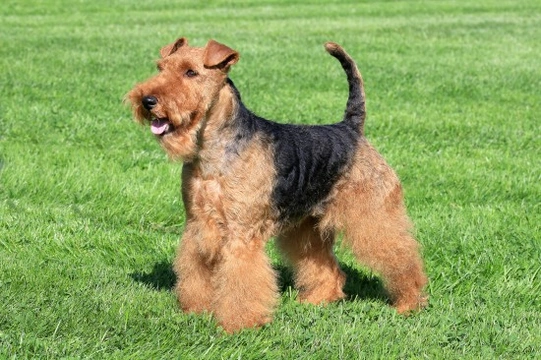
Is the Welsh terrier a good choice of pet?
The Welsh terrier is, as the name suggests, a Welsh dog breed that is quite possibly the oldest existing dog breed in the UK, and one that was initially bred to hunt rodents, badgers and foxes. Notably, the Welsh terrier has become more popular as a show dog within the last century than as a working dog, but the breed has still retained its original appearance and strong working traits.
The Welsh terrier is also classed as a vulnerable native dog breed by the UK Kennel Club, with fewer than 300 new puppies of the breed registered each year.
The Welsh terrier is similar in appearance to the wirehaired fox terrier, and also looks rather like a smaller version of the standard Airedale terrier, and is sometimes mistaken for both breeds! If you are wondering if a Welsh terrier is the right choice of dog for you, in this article we will look at the traits and requirements of the breed in more detail. Read on to learn more.
What is the temperament of the Welsh terrier?
The Welsh terrier possesses all of the typical traits of the terrier breeds, being outgoing, lively and generally cheerful. They have big personalities and can be prone to stubbornness, but are over all good natured dogs. They are rarely shy of people, and get on well with both friends and strangers.
They like to be active and have a role to fulfil, and enjoy working and playing with their families. They can be prone to being rather noisy, and do seem to very much enjoy digging holes in the garden if left unsupervised!
Are they easy to train?
The Welsh terrier is ranked in the middle of the pack in terms of canine intelligence, which makes them amenable to training, particularly when they are kept interested and given a role to fulfil. They tend to be relatively easily bored, and like variety rather than too much repetition. They do have something of a stubborn streak, and require clear, firm guidelines and unambiguous training.
How much exercise do they need?
As lively, working dogs that enjoy spending lots of time out of doors, they require significant amounts of exercise and opportunities to play. Walks should be kept varied and interesting, and provide plenty of opportunity for the dogs to work off their excess energy levels!
If bored or not exercised sufficiently, the Welsh terrier will soon become unhappy, and act out with excessive barking or destructive behaviour within the home. They enjoy a wide range of activities, including playing ball, swimming and generally running around!
Do they have a strong prey drive?
Like all terrier dog breeds, the Welsh terrier has a relatively strong prey drive, which is enhanced by the fact that they were widely kept historically for working hunting roles. Outside of the home, they do have a tendency to chase smaller animals such as cats, which is something that all owners should be prepared for and able to manage.
Are they a good choice for families?
As a fun loving, playful and high energy dog, the Welsh terrier enjoys the company of children of all ages that like to play with them! They will often instigate games with children that they learn are amenable to playing, and often bond strongly with the family’s children.
They can potentially be overly boisterous with young children and run the risk of playing too roughly or knocking little children over, but they are also good at adapting their behaviour to behave more gently with little children when given the chance.
When well socialised, they tend to live happily with other dogs and appreciate the company and having an added source of entertainment and companionship, but they can be dominant in some cases too. If introduced and managed properly when the dog is young, they can potentially live successfully with cats, although their strong prey drive does mean that introductions and socialisation must be carefully managed during the early days.
Are they healthy?
The Welsh terrier is among the most robust and healthy of all of the pedigree dog breeds, and they do not tend to suffer from a wide range of minor ills. The average longevity of the breed is twelve to thirteen years, placing them around the middle to high range for lifespan among dogs of a similar size, and it is not unheard of for Welsh terriers to live into their late teens.
Unlike many pedigree breeds, they do not have a long list of genetic predispositions to hereditary health problems, but they do have slightly elevated risk factors for some eye problems.
Primary lens luxation of the eye is the main breed-specific problem within their gene pool, which can lead to secondary glaucoma development in affected dogs.



